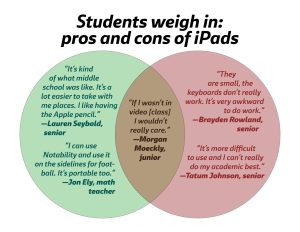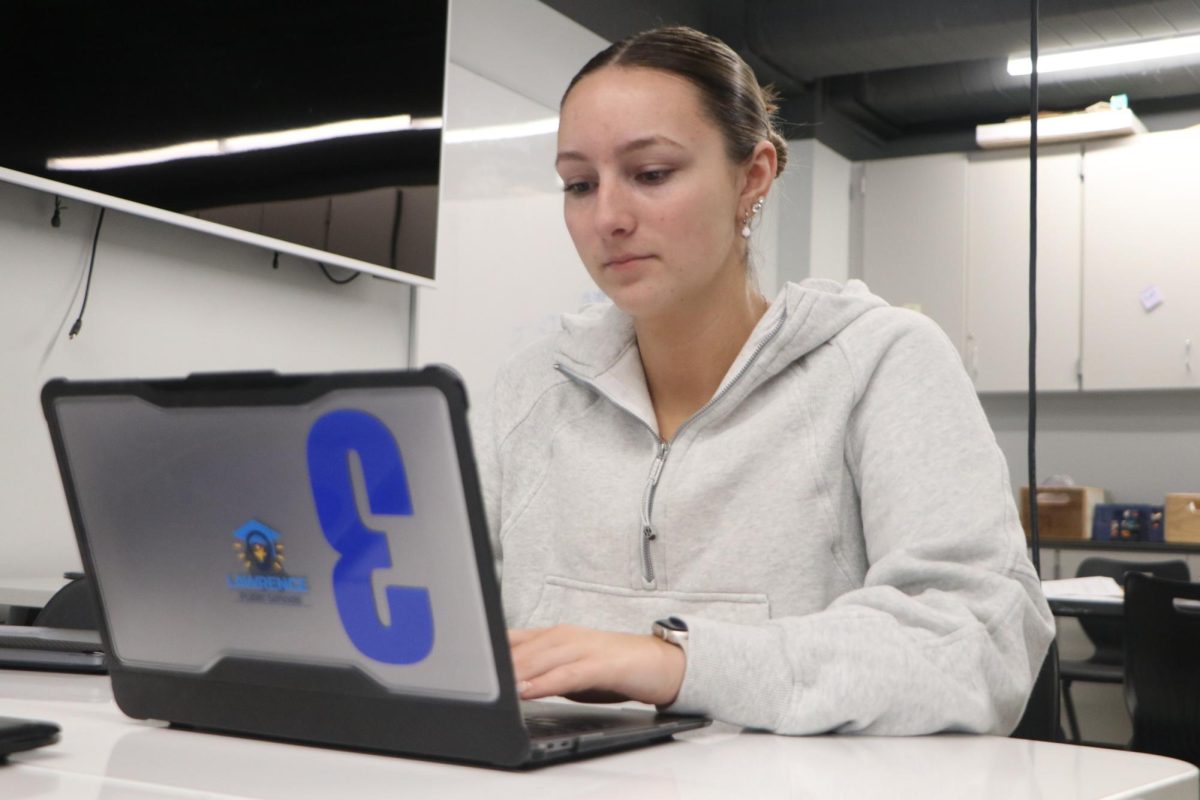At the beginning of this school year, the district distributed thousands of brand-new iPads to all students. And no one was happy about it.
Students had good reason to be upset. For the past six years, all high school students have been equipped with MacBooks, and the transition away from them was challenging. There was plenty of pushback, but with the district facing significant budget cuts, the decision was made to not renew the four year lease to keep the MacBooks. Now that a semester has passed with the new devices, students and staff are still unsure about the switch.
Graphic design teacher Jennifer Dixon-Perkins says she has mixed feelings about iPads.
“Not as bad as it could be, but not as good as it could be,” Dixon-Perkins said. “It makes it hard for kids to work on projects outside of class if they get behind, or if they are sick, because we can’t just send a computer home with every kid. But we are making it work, because that’s our only choice.”
Graphic design classes like Dixon-Perkins’ have a unique advantage: classroom sets of MacBooks. Select other CTE classes like video production and photography also have access to laptops and desktops. Senior Lauren Seybold says that those technology resources are essential to the material being taught.
“I think it’s kind of vital for what the course is,” Seybold said. “I think it’s valuable. I like using my computer because I used to have one, so even if I’m in graphic design, sometimes it’s easier to access stuff on the computer anyways, so I can use that time to check on other stuff too.”

Dixon-Perkins also has ten extra computers that can be checked out to students to take home on a temporary basis. However, there are too many students, and not enough computers.
“I like to check them out to my advanced students, because they work on things at home a lot more, which means if I have lower level students who need to catch up on missing work, I really don’t have any way for them to get caught up,” Dixon-Perkins said. “Then we’re dealing with a lot of late work.”
For most teachers however, iPads are the only technology available to students. For English teacher Leah Henry, the smaller devices aren’t up to the task.
“My students are frustrated because iPads do not work the same way the MacBooks did,” Henry said. “And even though the iPads allegedly can do everything the MacBooks can, it takes 10 steps to do it as opposed to one click.”
Despite the challenges in English classes, some students are finding benefits of the new iPads.
“It’s a lot easier to take with me places, and I enjoy the Apple Pencil. I can do my homework on the iPad writing a lot better than typing,” Seybold said.
However, Dixon-Perkins pointed out that for a software-based course, iPads are ineffective.

“Even Canva doesn’t have the same capabilities on an iPad that it does on a laptop,” Dixon-Perkins said. “Even the most basic programs just don’t have the tools that you need to create an upper level, quality product.”
In Henry’s English classes, students are still struggling to adapt to the new devices.
“They’re just not as efficient, and I have lots of students asking for paper copies instead of navigating the iPads,” Henry said.
Seybold agrees that even after a semester of adaptation, iPads are still challenging to use.
“It’s just getting back into the habits of having a screen that is touchable, and maybe sometimes a keyboard that doesn’t work all the time,” Seybold said. “I feel like I use my computer at home a lot more than I ever have before, because the iPads are not my favorite.”
This brings up an important issue with the switch to iPads: equity. Some students don’t have to deal with using the less powerful iPads, because they have access to better technology at home. Or they are in CTE classes that provide laptops. But for many students whose families face financial struggles, access to powerful devices at home is completely out of reach. Dixon-Perkins says that without computers, it’s hard to teach students essential job skills.
“We’re trying to prepare kids for the future, and we can’t even prepare them for their senior year,” Dixon-Perkins said. “I can always use more computers, and I just don’t have them. Our hands are tied. We are taking away the ability for kids to succeed.”







